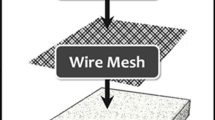Abstract
To determine if bifenthrin residues elicit morbidity and surfacing behavior in wireworms, larvae of the dusky wireworm, Agriotes obscurus (Coleoptera: Elateridae) were placed in field soil treated with the pyrethroid insecticide bifenthrin ~1 year previous. Morbidity was immediate and lasted as long as wireworms remained in the soil, disappearing quickly after transfer to clean soil. In 2009, field soil treated 336 days previous with bifenthrin at 340 g AI/ha elicited morbidity symptoms similar to that elicited by soil freshly amended with bifenthrin at 100 g AI, and analysis of the field soil confirmed residual levels of bifenthrin exceeding 100 g AI/ha. In 2010, wireworms placed in field soil treated 343 days previous with bifenthrin at 100, 200, and 300 g AI/ha responded as in 2009, with the degree of morbidity increasing with the rate of insecticide, and with wireworms in a non-feeding state more affected than those in a feeding state at each rate. In both 2009 and 2010, moribund wireworms moved to the soil surface within 1 day of placement in the soil containing residual bifenthrin and remained there until reburied, after which they often resurfaced. To confirm that the bifenthrin residues elicited repellency, wireworms were placed in soil window bioassays containing field soil with residual bifenthrin. Wireworms behaved markedly different upon contacting soil containing the residues than when exposed to untreated soil, both in the presence and absence of an attractant, but were less likely to avoid soil containing residual bifenthrin when attracted by wheat seedlings placed inside it.


Similar content being viewed by others
References
Fecko A (1999) Environmental fate of bifenthrin. Environmental Hazards Assessment Program, Department of Pesticide Regulation, Sacaramento, CA. www.cdpr.ca.gov/docs/emon/pubs/fatememo/bifentn.pdf. Accessed 1 Dec 2010
Furlan L (1998) The biology of Agriotes ustulatus Schaller (Col., Elateridae). II. Larval development, pupation, whole cycle description and practical implications. J Appl Entomol 122:71–78
Kuhar TP, Alvarez JM (2008) Timing of injury and efficacy of soil-applied insecticides against wireworms on potato in Virginia. Crop Protection 27:792–798
Parker WE, Howard JJ (2001) The biology and management of wireworms (Agriotes spp.) on potato with particular reference to the UK. Agric Forest Entomol 3:85–98
SAS/STAT(R) (2009) 9.2 User’s guide, 2nd edn. SAS Institute Inc., SAS Campus Drive, Cary, NC
van Herk WG, Vernon RS (2007) Soil bioassay for observing the orientation, feeding, repellency, and post-contact toxicity behaviours of wireworms (Coleoptera: Elateridae) exposed to insecticide treated wheat seed. Environ Entomol 36:1441–1449
van Herk WG and Vernon RS (2011) Morbidity and recovery of the dusky wireworm, Agriotes obscurus L. (Coleoptera: Elateridae), placed in soil amended with bifenthrin. J Pest Sci. doi:10.1007/s10340-011-0381-2
van Herk WG, Vernon RS, Moffat C, Harding C (2008) Response of the Pacific Coast wireworm, Limonius canus, and the dusky wireworm, Agriotes obscurus (Coleoptera: Elateridae), to insecticide-treated wheat seeds in a soil bioassay. Phytoprotection 89:7–19
van Herk WG, Vernon R, Harding C, Roitberg BD, Gries G (2010) Possible aversion learning in the Pacific Coast wireworm. Phys Entomol 35:19–28
Vernon RS, LaGasa E, Philip H (2001) Geographic and temporal distribution of Agriotes obscurus and A. lineatus (Coleoptera: Elateridae) in British Columbia and Washington as determined by pheromone trap surveys. J Entomol Soc 98:257–265
Vernon RS, van Herk WG, Tolman JH, Ortiz Saavedra H, Clodius M, Gage B (2008) Transitional sublethal and lethal effects of insecticides after dermal exposures to five economic species of wireworms (Coleoptera: Elateridae). J Econ Entomol 101:365–374
Vernon RS, van Herk WG, Clodius M, Harding C (2009) Wireworm management I: stand protection versus wireworm mortality with wheat seed treatments. J Econ Entomol 102:2126–2136
Acknowledgments
We thank the Pest Management Centre of Agriculture and Agri-Food Canada and FMC Corporation for funding of this research.
Author information
Authors and Affiliations
Corresponding author
Additional information
Communicated by M. Traugott
Rights and permissions
About this article
Cite this article
van Herk, W.G., Vernon, R.S. & McGinnis, S. Response of the dusky wireworm, Agriotes obscurus (Coleoptera: Elateridae), to residual levels of bifenthrin in field soil. J Pest Sci 86, 125–136 (2013). https://doi.org/10.1007/s10340-011-0386-x
Received:
Accepted:
Published:
Issue Date:
DOI: https://doi.org/10.1007/s10340-011-0386-x




